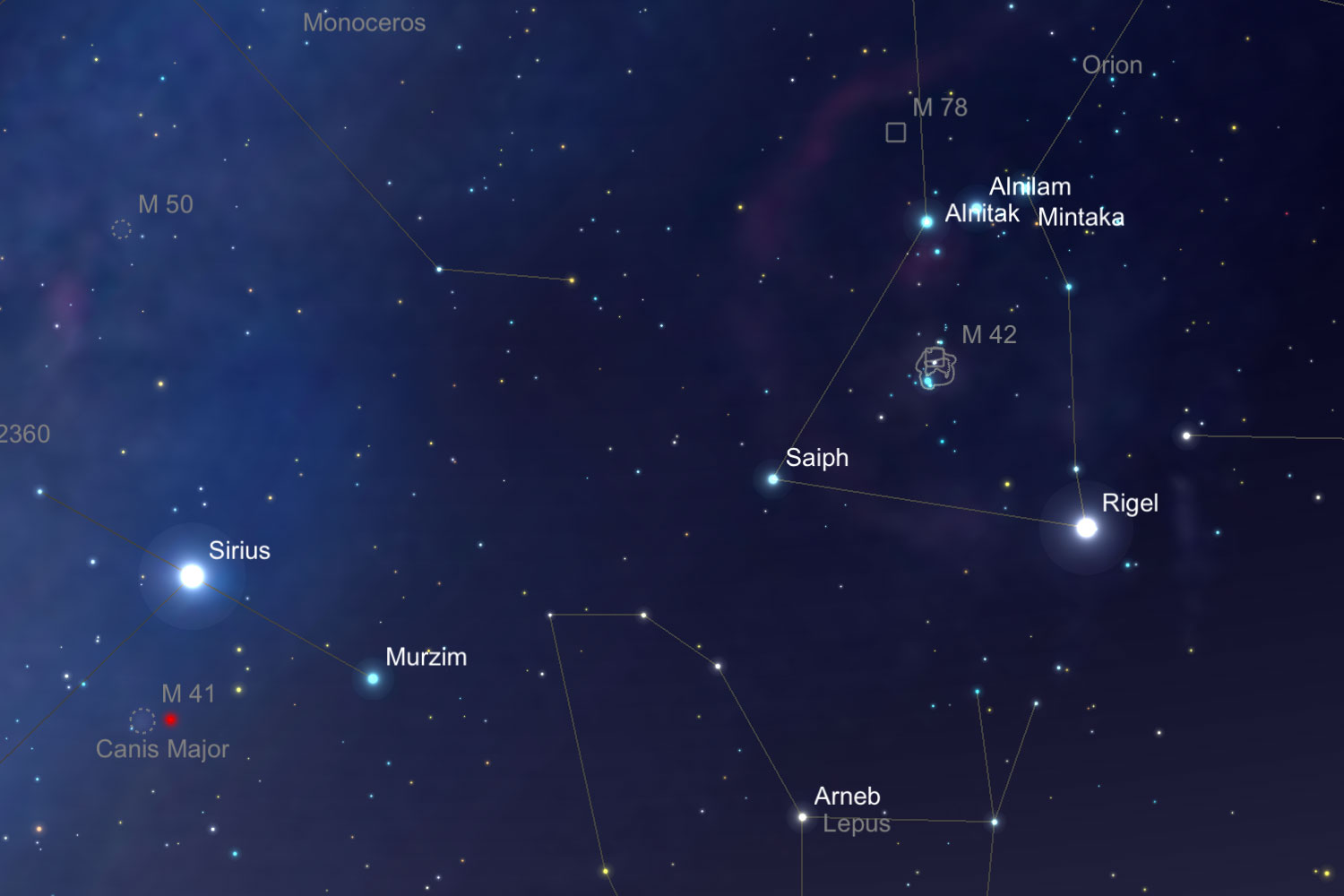
Introduction | Map | Find/Identify | Sketch | My Own Photos | My Own Observations | References
On this page I collect my observations of the open star cluster M 41 (NGC 2287) in the constellation Canis Major.
The open star cluster M 41 in the constellation Canis Major is a "Winter DSO", belongs according to Stoyan to the five most beautiful star clusters visible from Central Europe and should not be missed.
Size: 40' / 30' (Stoyan / Karkoschka)
Distance: 2,300 light years (Stoyan)
Rating: *** (Stoyan)

M 41 below Sirius (Canis Major) (Image Courtesy of SkySafari Astronomy, www.simulationcurriculum.com)
Find/Identify: The open star cluster M 41 in the constellation Canis Major is located fairly low in the sky, even below Sirius, the brightest star in the winterly sky and also generally. With the help of Sirius, M 41 should be easy to find (provided that Sirius is visible). See the map above for details.
The sketch by Michael Vlasov (DeepSkyWatch.com) provides a rough impression of what I observed (my impression was much fainter than the sketch): Sketch of M 41 by Michael Vlasov (Copyright © Michael Vlasov 2016)
Note: I have only the author's permission to link to this sketch.
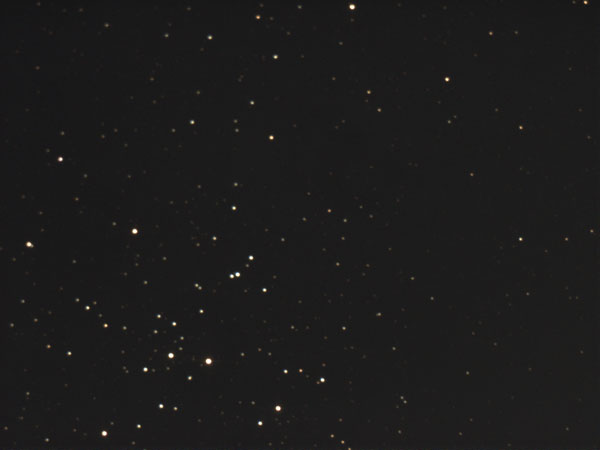 |
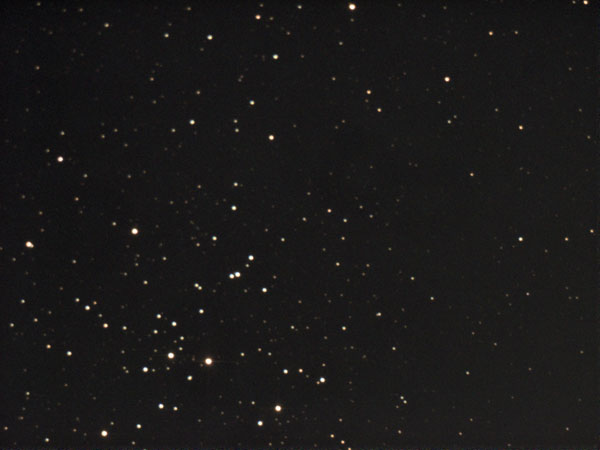 |
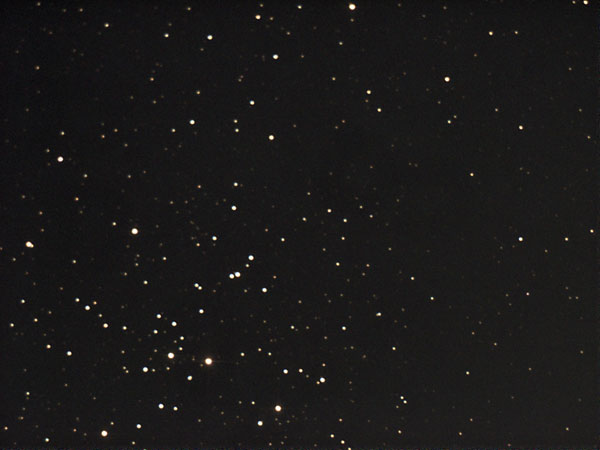 |
||
M 41 (Canis Major), unprocessed |
Ditto, post-processed |
Ditto, post-processed and sharpened |
||
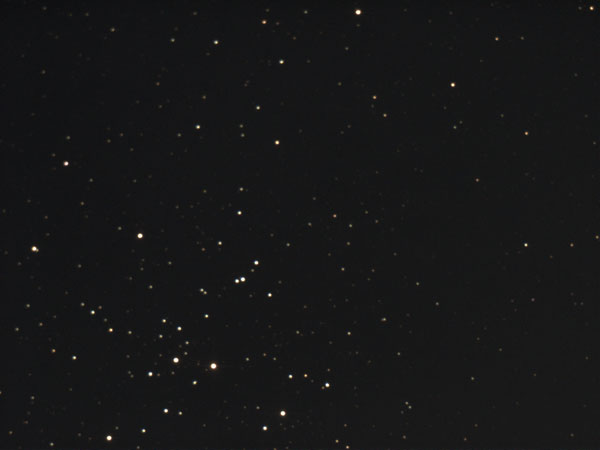 |
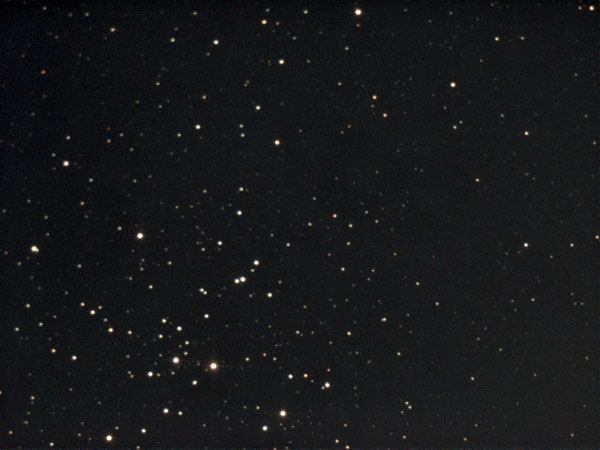 |
 |
||
M 41 (Canis Major), unprocessed |
Ditto, post-processed |
Ditto, post-processed and sharpened |
Photos taken with Sky-Watcher Explorer 150PDS (April 6, 2018), originals reduced to 600 x 450 pixels. Confirmed using www.astroimages.de/de/gallery/M41.html and All sky plate solver.
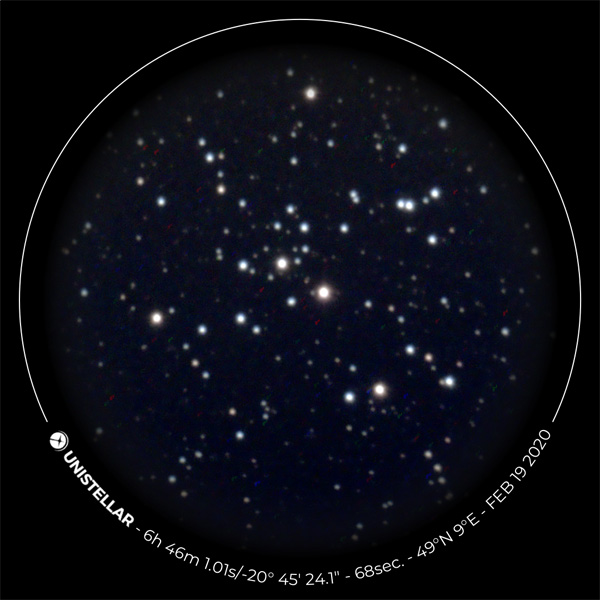 |
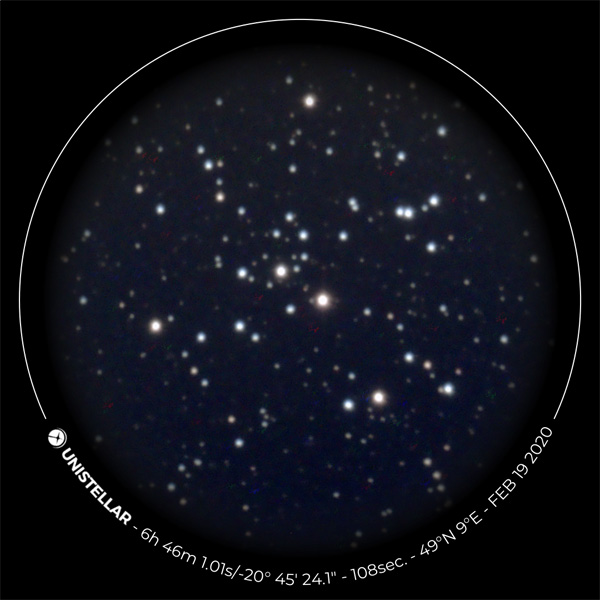 |
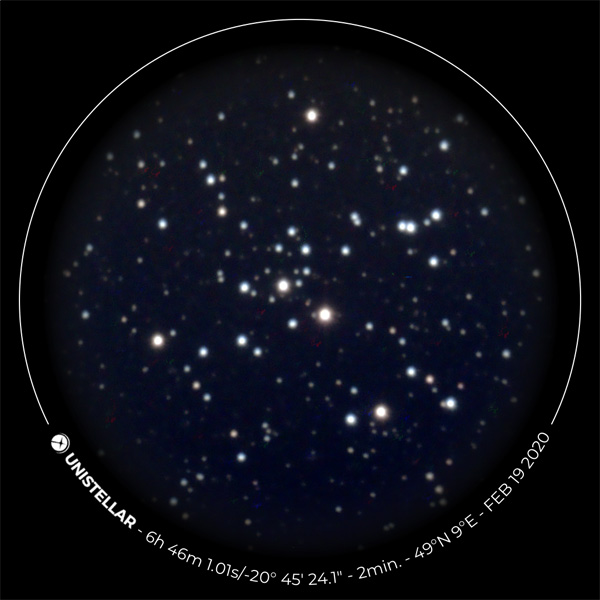 |
||
M 41 - Feb 19, 2020 |
M 41 - Feb 19, 2020 |
|
M 41 - Feb 19, 2020 |
|
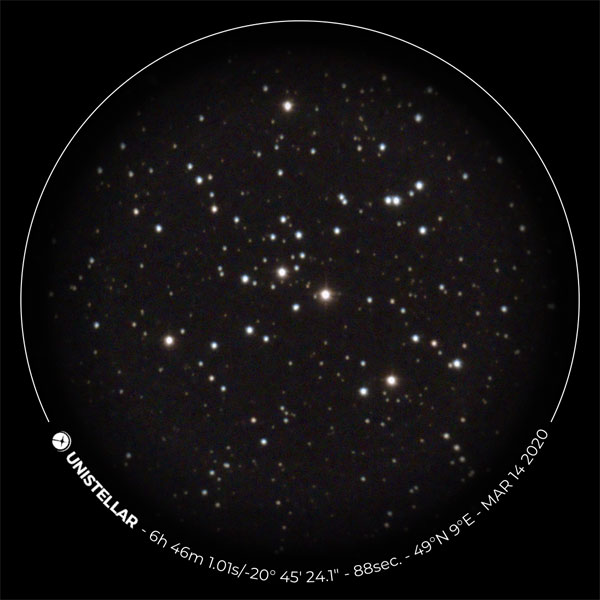 |
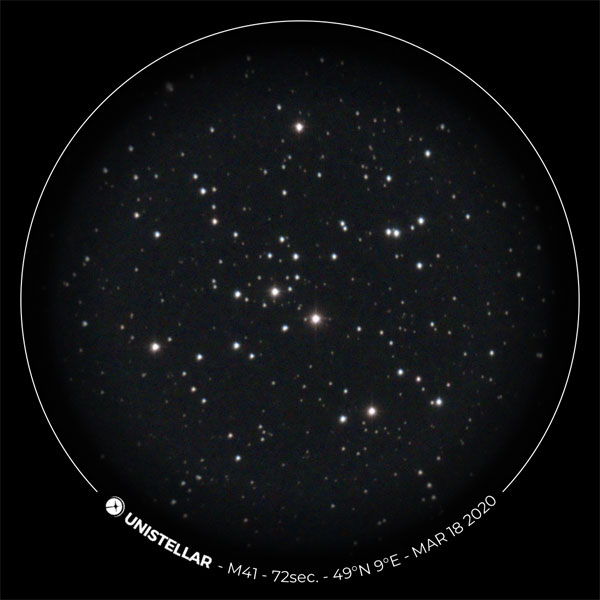 |
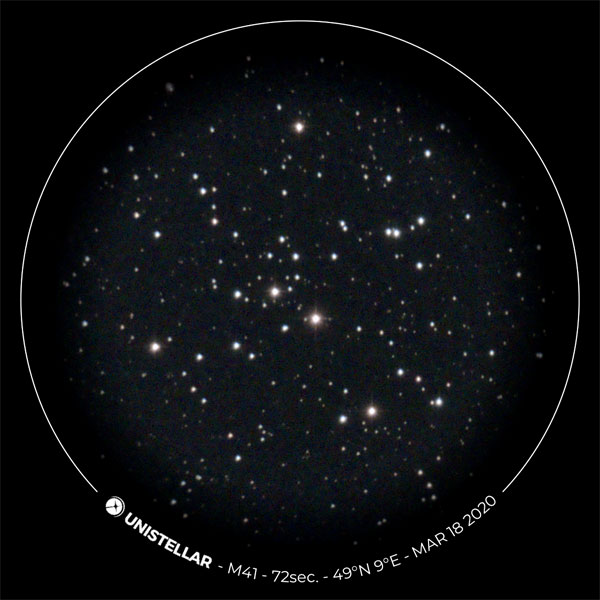 |
||
M 41 - Mar 14, 2020 |
M 41 - Mar 18, 2020 |
M 41 - Mar 18, 2020, processed |
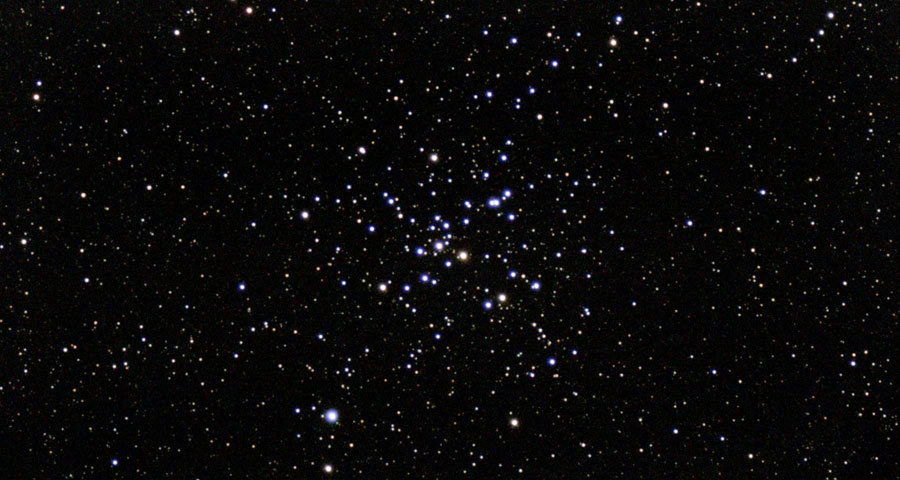 |
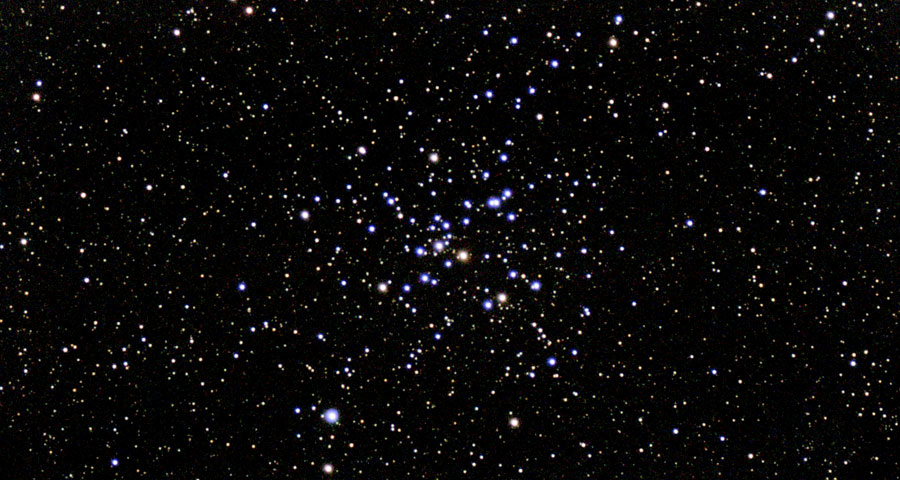 |
|
M 41 - Jan 29, 2024 - original, 10 min |
M 41 - Jan 29, 2024 - large, 10 min |
 |
 |
|
M 41, Feb 7, 2025 - large, 30 min |
M 41, Feb 7, 2025 - large, 30 min |